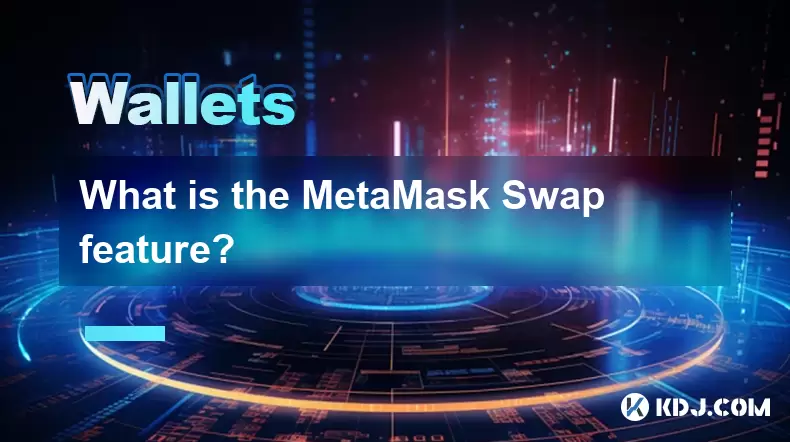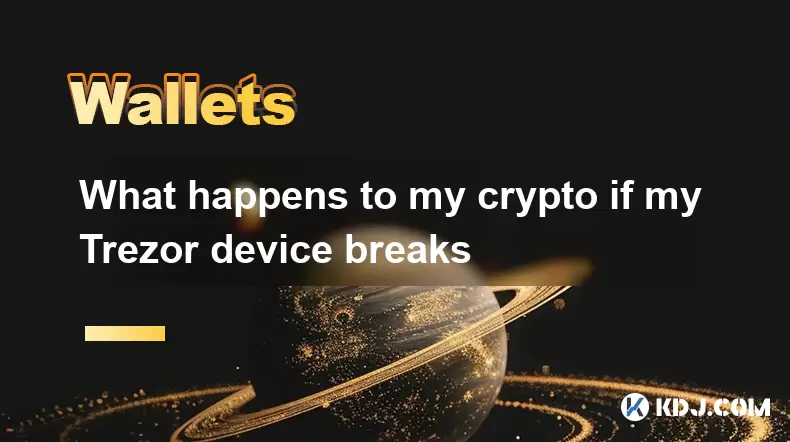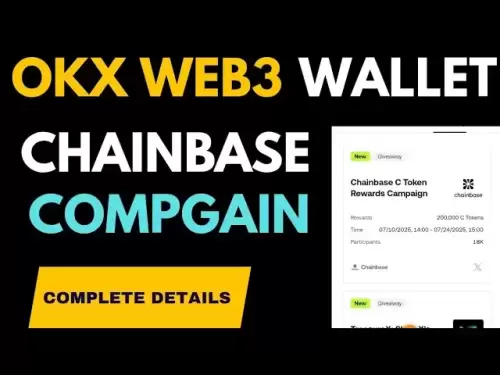-
 Bitcoin
Bitcoin $117,576.6195
-0.21% -
 Ethereum
Ethereum $2,938.5668
-1.35% -
 XRP
XRP $2.7699
4.60% -
 Tether USDt
Tether USDt $1.0003
0.01% -
 BNB
BNB $688.1624
-0.01% -
 Solana
Solana $160.5113
-1.95% -
 USDC
USDC $0.9999
0.01% -
 Dogecoin
Dogecoin $0.1976
-0.70% -
 TRON
TRON $0.3008
1.54% -
 Cardano
Cardano $0.7159
-2.16% -
 Hyperliquid
Hyperliquid $46.2240
2.04% -
 Stellar
Stellar $0.3966
22.03% -
 Sui
Sui $3.3928
-3.11% -
 Chainlink
Chainlink $15.1204
-2.43% -
 Bitcoin Cash
Bitcoin Cash $515.1741
-1.19% -
 Avalanche
Avalanche $20.8130
-0.90% -
 Hedera
Hedera $0.2001
-2.12% -
 UNUS SED LEO
UNUS SED LEO $9.0522
0.72% -
 Shiba Inu
Shiba Inu $0.0...01316
-2.01% -
 Toncoin
Toncoin $2.9843
0.61% -
 Litecoin
Litecoin $92.6745
-2.71% -
 Polkadot
Polkadot $3.9483
-0.06% -
 Monero
Monero $328.5347
1.10% -
 Dai
Dai $0.9998
0.01% -
 Ethena USDe
Ethena USDe $1.0006
-0.01% -
 Uniswap
Uniswap $8.3739
-6.50% -
 Bitget Token
Bitget Token $4.4241
-1.99% -
 Pepe
Pepe $0.0...01222
-3.96% -
 Aave
Aave $300.5203
-3.61% -
 Bittensor
Bittensor $382.2607
-1.92%
What is the MetaMask Swap feature?
MetaMask Swap is a decentralized exchange aggregator that lets users trade cryptocurrencies directly from their wallet, offering secure, account-free swaps across multiple networks.
Jul 01, 2025 at 08:57 am

Understanding MetaMask Swap: A Decentralized Exchange Aggregator
MetaMask Swap is a built-in feature within the MetaMask wallet that allows users to exchange one cryptocurrency for another directly from their wallet interface. It functions as a decentralized exchange (DEX) aggregator, meaning it pulls data and liquidity from multiple decentralized exchanges such as Uniswap, SushiSwap, and 0x, among others. This ensures users get the best possible price when swapping tokens without having to manually check each DEX individually.
Unlike centralized exchanges, MetaMask Swap does not require users to create an account or undergo KYC verification. Users retain full control of their private keys and funds throughout the entire transaction process, making it a secure and trustless way to trade digital assets.
How Does MetaMask Swap Work?
When a user initiates a token swap in MetaMask, the wallet queries several decentralized exchanges simultaneously to find the most favorable rate for the requested trade. The MetaMask Swap engine then presents this information to the user, including the estimated amount they will receive after fees and slippage.
- The wallet generates a smart contract call based on the selected trade.
- The user confirms the transaction via the MetaMask interface.
- The swap is executed through the chosen decentralized exchange’s liquidity pool.
- The resulting tokens are sent directly to the user's wallet address.
It's important to note that users pay gas fees in ETH for every transaction, and these fees can fluctuate depending on network congestion.
Supported Tokens and Networks
MetaMask Swap supports a wide variety of ERC-20 tokens on the Ethereum mainnet, as well as other EVM-compatible networks such as Binance Smart Chain, Polygon, Avalanche, and Fantom. However, not all tokens may be available for swapping due to insufficient liquidity or lack of support from the integrated DEXs.
To use MetaMask Swap on different networks:
- Open the MetaMask extension.
- Switch the network using the dropdown menu at the top.
- Ensure you have enough native currency (e.g., BNB for BSC) to cover gas fees.
Before proceeding with any swap, always double-check the token addresses to avoid sending funds to incorrect contracts.
Step-by-Step Guide to Using MetaMask Swap
Using MetaMask Swap is a straightforward process. Below is a detailed walkthrough:
- Open your MetaMask browser extension and ensure you're connected to the correct network.
- Click on the "Swap" tab located in the navigation bar.
- Select the token you want to swap from the "From" dropdown.
- Choose the token you wish to receive from the "To" dropdown.
- Enter the amount you'd like to swap.
- Wait for MetaMask to fetch the best available rate across decentralized exchanges.
- Review the estimated output amount, transaction fee (gas), and slippage tolerance.
- Click "Swap" to proceed.
- Confirm the transaction in the MetaMask pop-up window.
After confirmation, the transaction will appear in your activity feed once mined. You can track its progress using the block explorer link provided by MetaMask.
Fees and Slippage Settings in MetaMask Swap
When using MetaMask Swap, two critical factors affect your trade: network fees (gas) and slippage tolerance.
Gas Fees: These are paid to miners or validators for processing your transaction on the blockchain. Gas fees vary depending on network demand and are denominated in the native currency of the chain (e.g., ETH for Ethereum).
Slippage Tolerance: This refers to how much price movement you're willing to accept between the time you initiate the swap and when it’s executed. MetaMask offers preset options like 0.1%, 0.5%, and 1%, but advanced users can adjust this manually.
Higher slippage increases the likelihood of a successful trade during volatile market conditions, but it also risks receiving fewer tokens than expected. Always assess market conditions before adjusting these settings.
Security Considerations When Using MetaMask Swap
While MetaMask Swap is a convenient tool, users should remain vigilant about potential risks:
- Only interact with verified token contracts. Use the contract address lookup feature if unsure.
- Never share your seed phrase or private key with anyone.
- Enable two-factor authentication (2FA) for your MetaMask account if available.
- Regularly update your MetaMask extension to benefit from the latest security patches.
Additionally, always verify the recipient address before confirming a transaction. If you're using a hardware wallet, ensure it's properly connected and recognized by MetaMask before initiating a swap.
Frequently Asked Questions (FAQ)
Q: Can I use MetaMask Swap on mobile devices?
Yes, MetaMask Swap is available on both desktop extensions and the MetaMask mobile app, supporting iOS and Android platforms. The interface and functionality are nearly identical to the desktop version.
Q: Why does my swap fail sometimes?
Swaps may fail due to high slippage, low gas fees, or network congestion. Try increasing the gas limit or adjusting slippage tolerance if this occurs frequently.
Q: Are there any limits on how much I can swap?
There are no hard limits enforced by MetaMask itself, but large trades may encounter issues due to liquidity constraints on decentralized exchanges. For substantial amounts, consider breaking the trade into smaller transactions.
Q: Does MetaMask earn a fee from swaps?
MetaMask earns a small commission from some of the decentralized exchanges it integrates with. This helps fund the development and maintenance of the wallet.
Disclaimer:info@kdj.com
The information provided is not trading advice. kdj.com does not assume any responsibility for any investments made based on the information provided in this article. Cryptocurrencies are highly volatile and it is highly recommended that you invest with caution after thorough research!
If you believe that the content used on this website infringes your copyright, please contact us immediately (info@kdj.com) and we will delete it promptly.
- Ripple's RLUSD Finds a Home: Swiss Bank AMINA Integrates the Stablecoin
- 2025-07-13 06:30:11
- Worldcoin Price Prediction: Navigating the Invalidation Zone
- 2025-07-13 06:30:11
- Ethereum Price Prediction: Will ETH Reach 100% Gains?
- 2025-07-13 04:50:12
- Ruvi AI: The Smart Choice Over Avalanche? Plus, It's Audited!
- 2025-07-13 04:50:12
- Onyxcoin (XCN): Ready to Outperform in This Crypto Cycle?
- 2025-07-13 04:30:12
- GameFi, Regulated, Asia: A New Era of Web3 Gaming?
- 2025-07-13 04:30:12
Related knowledge

What is a hardware wallet's secure element
Jul 11,2025 at 10:14pm
What is a Hardware Wallet's Secure Element?A hardware wallet is one of the most secure ways to store cryptocurrencies. Unlike software wallets, which ...

What is the difference between a custodial and non-custodial wallet
Jul 13,2025 at 03:21am
Understanding Wallet Types in CryptocurrencyIn the world of cryptocurrency, digital wallets play a crucial role in managing and securing assets. A wal...

How to add a new network to MetaMask
Jul 11,2025 at 11:42pm
Understanding the Need to Add a New NetworkWhen using MetaMask, a popular Ethereum-based cryptocurrency wallet, users often need to interact with diff...

How to add Ethereum L2 networks like Arbitrum to Trezor
Jul 11,2025 at 12:36am
What Is Ethereum L2 and Why Add It to Trezor?Ethereum Layer 2 (L2) networks, such as Arbitrum, are scaling solutions designed to reduce congestion on ...

What happens to my crypto if my Trezor device breaks
Jul 11,2025 at 01:49pm
Understanding Hardware Wallet FailureWhen you store cryptocurrency in a Trezor hardware wallet, the private keys are kept offline, offering a high lev...

How to find a specific receiving address on my Trezor
Jul 09,2025 at 10:36pm
Understanding the Purpose of a Receiving AddressA receiving address is a unique identifier used in blockchain networks to receive cryptocurrency. Each...

What is a hardware wallet's secure element
Jul 11,2025 at 10:14pm
What is a Hardware Wallet's Secure Element?A hardware wallet is one of the most secure ways to store cryptocurrencies. Unlike software wallets, which ...

What is the difference between a custodial and non-custodial wallet
Jul 13,2025 at 03:21am
Understanding Wallet Types in CryptocurrencyIn the world of cryptocurrency, digital wallets play a crucial role in managing and securing assets. A wal...

How to add a new network to MetaMask
Jul 11,2025 at 11:42pm
Understanding the Need to Add a New NetworkWhen using MetaMask, a popular Ethereum-based cryptocurrency wallet, users often need to interact with diff...

How to add Ethereum L2 networks like Arbitrum to Trezor
Jul 11,2025 at 12:36am
What Is Ethereum L2 and Why Add It to Trezor?Ethereum Layer 2 (L2) networks, such as Arbitrum, are scaling solutions designed to reduce congestion on ...

What happens to my crypto if my Trezor device breaks
Jul 11,2025 at 01:49pm
Understanding Hardware Wallet FailureWhen you store cryptocurrency in a Trezor hardware wallet, the private keys are kept offline, offering a high lev...

How to find a specific receiving address on my Trezor
Jul 09,2025 at 10:36pm
Understanding the Purpose of a Receiving AddressA receiving address is a unique identifier used in blockchain networks to receive cryptocurrency. Each...
See all articles

























































































